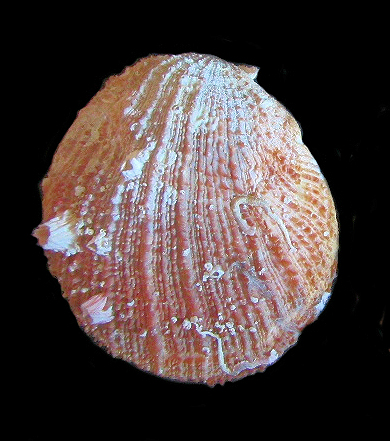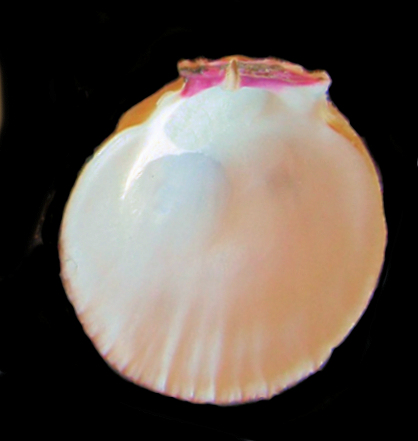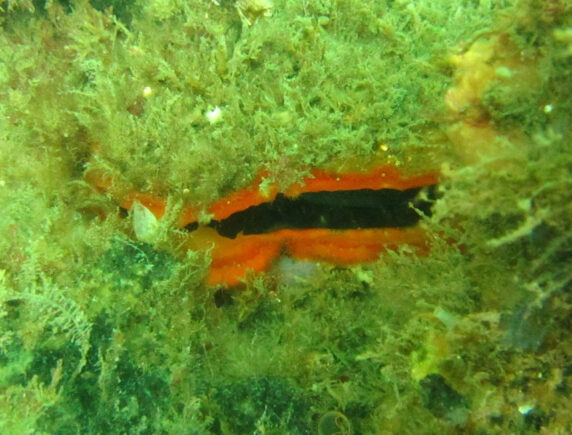Rock Scallop Shell, Crassadoma gigantea

 Rock Scallop Shell, Crassadoma gigantea. Shell collected off the beach in the greater San Diego area, San Diego, California, October 2018. Size: 20 cm (7.9 inches) x 20 cm (7.9 inches). Collection, photograph and identification courtesy of Bob Hillis, Ivins, Utah.
Rock Scallop Shell, Crassadoma gigantea. Shell collected off the beach in the greater San Diego area, San Diego, California, October 2018. Size: 20 cm (7.9 inches) x 20 cm (7.9 inches). Collection, photograph and identification courtesy of Bob Hillis, Ivins, Utah.
 Rock Scallop, Crassadoma gigantea. Underwater photograph of a Rock Scallop in its native environment in the greater San Diego area, San Diego, California, July 2018. Photograph and identification courtesy of Bob Hillis, Ivins, Utah.
Rock Scallop, Crassadoma gigantea. Underwater photograph of a Rock Scallop in its native environment in the greater San Diego area, San Diego, California, July 2018. Photograph and identification courtesy of Bob Hillis, Ivins, Utah.
The Rock Scallop, Crassadoma gigantea (J.E. Gray, 1825), is a member of the Pectinidae Family of Scallop Shells. They are also known as the Giant Rock Scallop and the Purple-hinged Rock Scallop and in Mexico as ostio’n gigante de roca and vieira de roca and are the only member of the Crassadoma Genus. The shells are large and heavy with the right valve adjusting in shape to match the surface contour of the rock to which it attaches. The left valve has a rough exterior surface and rounded ribs. The shell has a brown exterior and the interior is white, with purple regions near the hinge. Live specimens have a gorgeous orange mantle. The Rock Scallops reach a maximum of 22.8 cm (9.0 inches) in length and 19.5 cm (7.7 inches) in height.
The Rock Scallops are atypical and as juveniles are free-swimmers and at 2.5 cm (1.0 inch) in length attach themselves permanently to rock structures via their right valve. The shells are frequently overgrown with other organisms. They are found from in the intertidal zone to depths up to 76 m (250 feet). They by filtering phytoplankton from the water. In turn they are preyed upon by sea stars.
The Rock Scallops are found from Alaska to Cabo San Lucas, Baja California Sur and around the Revillagigedo Islands. They have live spans of up to fifty years.
Synonyms include Crassadoma giganteum, Hinnites giganteus, Lima gigantean, and Pecten multirugodosus.